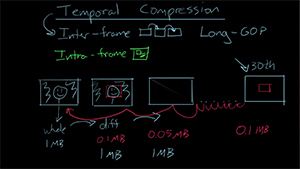Today students are intimately familiar with and expecting video in their education starting as early as elementary school.
Not only are they assuming there will be video, but their expectations are being shaped by resources like YouTube and Coursera. This trend is having a profound impact in education on instructors who embrace forward-looking pedagogies. With video, students are more engaged in creating their learning experience rather than just passively receiving information. Integration of video increases student engagement, maximizes school resources, facilitates collaboration, and can accommodate different learning styles. All of this leads to improve learning experiences and outcomes.
Flipped classroom and blended learning approaches to teaching a course are the new baseline utilizing video as a core component. However, just recording a lecture and putting it online for students to watch isn’t enough. Ideally videos need to be in short, easily digestible chunks with high production quality. This is very similar to the model that the online training company Lynda.com has adopted. An entire training module could be upwards of 24 hours of content, but it’s broken into numerous short videos typically under five minutes each, that play in sequence. As instructors have started to embrace video for their new teaching methods the biggest problem is still that do-it-yourself recordings are typically low quality plagued by simple mistakes with easy fixes, such as being back-lit creating a silhouette. Taking the time to plan, set up, and practice will make a world of difference in the end product and keep the viewer engaged.
Unfortunately, many instructors see production value as a universal solution, but condensed easily digestible content still trumps video quality. However, there’s a factor that’s less tangible while just as important as good production; the charisma of the presenter. The more engaging and entertaining they are, the more easily and likely the student is to keep watching. Monotone professors droning on will kill viewership faster than a broken overhead projector.
For entirely online courses video also serves as a reminder that the instructor is a real person not just someone hidden behind endless PowerPoint slides. Videos allow for that visual connection between the professor and their students. Not all content is conducive to having the presenter on screen all the time and can potentially create a good deal of post-production time to edit recordings to switch back and forth. At a minimum the instructor should have introductory videos for each topic chunk or week, depending on how the course is set up.
Cisco recently commissioned a review of current research on the benefits of video on learning and the quality of the educational experience and the findings are impressive. Two thirds of respondents believe that video increases student motivation, increases discussions, and helps instructors be more effective. Over 90% of university students that consumed recorded lectures felt it helped them learn course material. And almost half of elementary school children who used streaming video scored higher on their end-of-year science exam. Check out their infographic and whitepaper for more information.






